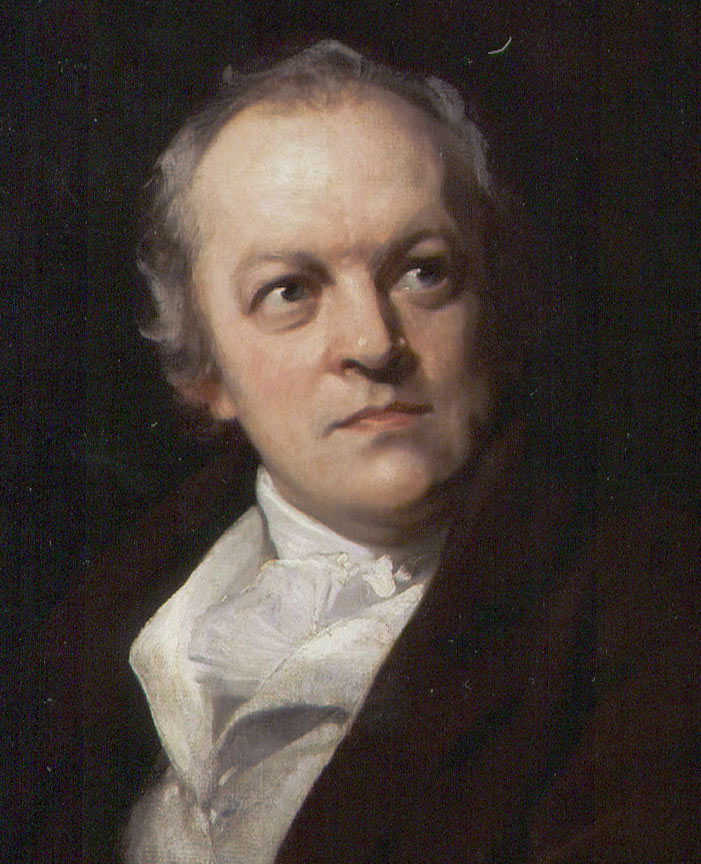Today's marks 250 years since Blake was born. Ovi Magazine is honoring this day with several articles on Blake; here is one of them, by Rene Wadlow.
William Blake: A Citizen of EternityWilliam Blake
Who beat upon the Wall
Till Truth obeyed his call.
~ W.B. Yeats
“There have been men who loved the future like a mistress, and the future mixed her breath into their breath and shook her hair about them and hid them from understanding of their times. William Blake was one of these men, and if he spoke confusedly and obscurely it was because he spoke of things for whose speaking he could find no models in the world he knew.” So starts Yeats essay on William Blake and the Imagination.
Blake is a citizen of no specific time, and certainly not his own. 28 November marks his birth in 1757 in a London family of artistic craftsmen. His father saw his talent early and encouraged him to make sketches of plaster statues which he brought home. His father welcomed his early apprenticeship as an engraver, though later the family had little understanding for the symbolic engravings that became the trademark of William Blake’s artistic work.
He was born into a Protestant family which had no place for the ceremonies and the art of the Catholic Church or the Church of England. Blake lived in a period 1757-1827 between two worlds — the faith of an earlier time had faded and the scientific outlook had not yet taken hold. Blake was keenly aware of being in a period of transition, much as Adam who was in transition between the Garden of Eden and the world of consequences for one’s actions. Blake used the symbol of Eden and its tree of the knowledge of good and evil. The kingdom that was passing was the kingdom of the Tree of Knowledge — the ordinary world into which Adam and Eve had gone. The coming kingdom was that of the Tree of Life in which there is “Mercy, Pity, Peace, and Love.” Blake saw the new kingdom as that of “the internal Church which has no other gospel than liberty, both of body and mind, to exercise the divine arts of imagination.”
In his Prophetic Books Blake sets out the path to this Tree of Life by what today is called creative visualization. Visualisation is the form-building aspect of the creative imagination. Basically, visualisation is focusing consciousness toward a sensed goal involving the use of the will, a clear and focussed mind and an emotional sensitivity toward the desired outcome. As Blake wrote “Let every Christian, as much as in him lies, engage himself openly and publicly before all the World in some Mental pursuit for the Building up of Jerusalem.” For Blake Jerusalem was the name for this transformed state of being as expressed in one of his best-known poems Jerusalem (1804):
Bring me my bow of burning gold!
Bring me my arrows of desire!
Bring me my spear! O clouds unfold!
Bring me my Chariot of Fire!
I will not cease from mental fight;
Nor shall my sword sleep in my hand
Till we have built Jerusalem
In England’s green and pleasant land.
William Blake’s thought was formed by his reflections, although he drew upon earlier mystic writers such as Jacob Boehme (1575-1624) and the traditions of alchemy and astrology. He was fortunate in having a few close friends who, without being rich, had enough money to buy many of Blake’s engravings and watercolors and introduced Blake into some of London’s intellectual society to which his craftman’s status would not have been open. A later friend and watercolor painter John Varley had a long-standing interest in astrology and appreciative of Blake’s symbol art.
Today, we again are in a period of transition between worlds, and as Blake stressed we need beauty “the one mask through which can be seen the unveiled eye of eternity.”

No comments:
Post a Comment